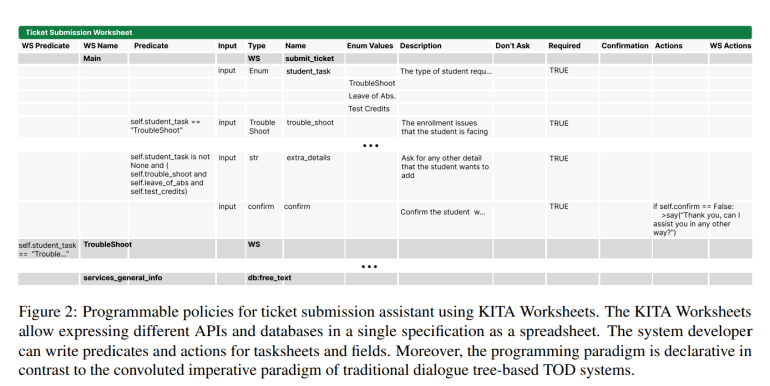- Stanford introduces KITA, a new AI framework for task-oriented conversational agents.
- KITA addresses issues like unreliable responses (hallucination) in traditional AI models.
- It offers flexibility with a programmable approach via the KITA Worksheet.
- Key features include resilience to diverse queries and integration with multiple knowledge sources.
- Real-world trials show KITA outperforms GPT-4 in execution accuracy, dialogue act accuracy, and goal completion rates.
Main AI News:
Stanford University has introduced KITA, a groundbreaking framework designed to advance task-oriented conversational agents beyond the limitations of traditional models. Unlike conventional systems prone to generating unreliable responses—a phenomenon termed hallucination—KITA ensures interactions grounded in accurate data and knowledge.
Traditional dialogue trees, while useful, often fail to accommodate the breadth of user queries and lack flexibility in adapting to diverse interaction scenarios. In response, Stanford’s KITA leverages a programmable approach via the KITA Worksheet, empowering developers to specify agent behaviors with precision and ease. This declarative policy programming paradigm enhances reliability and responsiveness, setting a new standard in AI-driven conversational interfaces.
Key features of KITA include its resilience in handling diverse queries, seamless integration with multiple knowledge sources for informed responses, and the ability to programmatically manage complex relationships through its innovative worksheet. Real-world trials involving 62 participants demonstrated KITA’s superiority over GPT-4, showcasing significant improvements across execution accuracy, dialogue act precision, and goal completion rates.
With an impressive 91.5% execution accuracy, 91.6% dialogue act accuracy, and a 74.2% goal completion rate, KITA’s performance underscores its effectiveness in real-world applications. The framework not only enhances task and knowledge integration but also supports compositional dialogue capabilities, ensuring precise and contextually relevant interactions.
Stanford’s introduction of KITA and the KITA Worksheet marks a transformative leap forward in AI-driven conversational technologies. By bridging the gap between flexibility and reliability, KITA promises to redefine the landscape of task-oriented dialogue systems, offering developers and users alike a more intelligent and responsive interaction experience.
Conclusion:
Stanford’s introduction of KITA represents a significant advancement in AI-driven conversational technologies. By enhancing reliability, flexibility, and performance metrics compared to existing models, KITA is poised to lead the market in delivering more precise and contextually relevant interactions. This innovation sets a new standard for developers seeking robust solutions in task-oriented dialogue systems, promising heightened efficiency and effectiveness in various application domains.

